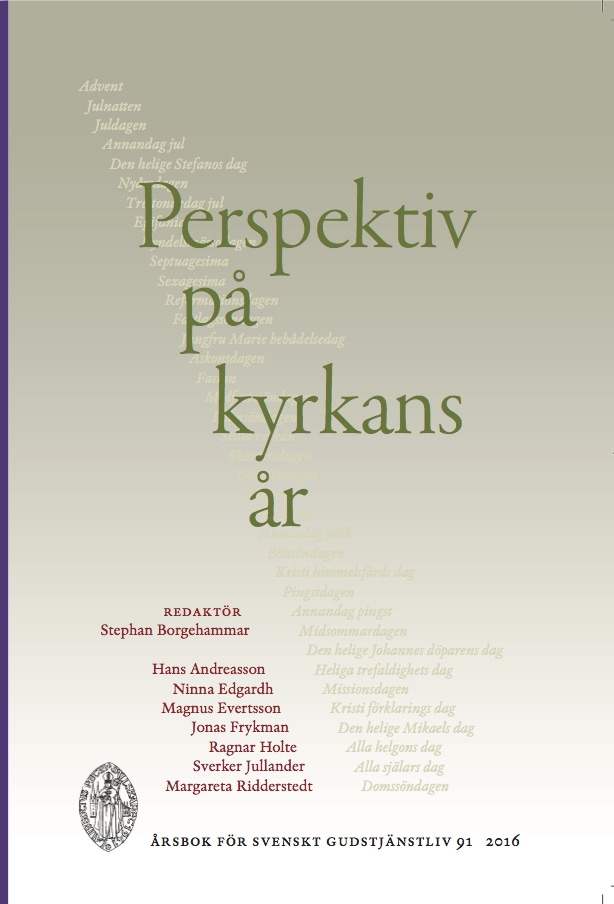Kyrkoåret i frikyrkligt gudstjänstliv. Med fokus på utvecklingen inom Svenska Missionsförbundet/Svenska Missionskyrkan 1926–2011
Abstract
The Liturgical Year in the Swedish Free Churches
The journal Tidskrift för predikanter (Journal for Preachers), later called Tro & Liv (Faith and Life), continuously published commentaries on Biblical texts as an aid for preachers during the years 1926–2011. The Swedish liturgical year has been the chief organizing principle for these commentaries, which have been an important part of the journal, the other two recurring sections being book reviews and thematic articles. Texts by the editors have often alluded to the liturgical year and thereby revealed the attitude of the various editors to it. Liturgical developments have also, over the years, been touched on in articles and reviews.
With the publication of the ”handbook” or book of worship of the Mission Covenant Church of Sweden (Svenska Missionsförbundet) in 1947, a distinct series of pericopes for the Swedish liturgical year was introduced – similar but not identical to the series of pericopes used in the Church of Sweden. The idea was to clarify the Mission Covenant Church’s own identity as it is expressed in preaching and worship. In this series, texts from the Old Testament, the Gospel of John and a few other New Testament writings were particularly favoured. However, this liturgical year was not widely adopted. In fact, in the 1963 edition of the service manual, the series of pericopes had been removed and only a list of suggested hymns for the various feasts of the liturgical year was retained.
Toward the end of the 1980s and during the 1990s a revitalisation of preaching was instead sought through a more intense engagement with hermeneutical and existential questions. By basing sermons on exegetical studies and their application to human experience it was expected that the task of preaching could be renewed and actualized. The exegetical commentaries adopt a more individualistic tone. At the same time the service book of 1983/1990 was developed to again include pericopes for the liturgical year based on active collaboration with the Church of Sweden on its lectionary (Evangeliebok) of 1983. The motives were now ecumenical.
During the final years of the journal (it was discontinued in 2011), a format for the exegetical commentaries was applied that emphasized the liturgy more, which gave the Swedish liturgical year a new actuality. Indeed, the commentaries were sometimes drafted so as to cover several worship occasions during a major holiday. In this way, continuity and an emphasis on the worshipping congregation came to characterize the commentaries. In this manner the journal returned to routines that had been taken for granted a couple of decades earlier.
In sum, the liturgical year may be said to have a firm position in the worship of the Swedish Free Churches, in particular the former Swedish Mission Covenant Church, now the Uniting Church in Sweden.
Downloads
Published
Issue
Section
License
© the authors, Laurentius Petri Sällskapet för Svenskt Gudstjänstliv and Artos & Norma Bokförlag. Copying and using material from Svenskt Gudstjänstliv for scholarly purposes is permitted as long as the source is indicated. For other uses, please contact the respective author as well as the publisher. Special restrictions may apply to images.


